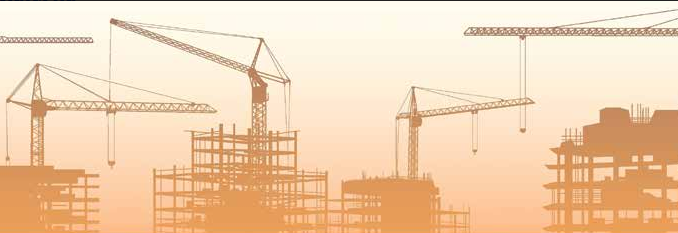
To say president of Canadian Construction Association Michael Atkinson is stoked about prospects for the Canadian construction sector in 2017 would be an exercise in understatement. Where the industry saw softer years in 2015 and 2016, the coming year shapes up to be a return to near capacity engagement, a turnaround due mainly to announced federal and provincial infrastructure program spending.
“After seeing weaker conditions, especially with low oil prices and the fire in Fort McMurray, we’re hoping to see a lot of the huge commitments to infrastructure hit the street in 2017,” Atkinson says.
With new commitments from the federal government, planned infrastructure spending now totals $146 billion over 12 years. Additionally, two new pipeline projects announced late in 2016 will further boost capital spending.
“It’s certainly a tidal wave of money, and it’s very encouraging, looking at the federal government commitment alone. The new government doubled planned spending when it took office. Ontario is making an unprecedented commitment. And there are others,” Atkinson says.
“In past, governments have been focused on spending cuts. Now there’s an understanding that fiscal debt management is useless unless you invest in growth,” he says.
Canada’s low debt/GDP level and current low borrowing costs combined create “a perfect storm for reinvestment,” Atkinson notes.
Much of Canada’s infrastructure was built 40 to 50 years ago, and has reached the end of its useful life. Spending on new infrastructure is expected to directly return a dollar-and-a-half for every dollar spent. The stimulative impact can also be expected to boost private sector confidence and spur further expansionary spending by business.
Another important government factor, an increase in immigration will also drive demand in the construction sector. Immigration Minister John McCallum recently boosted the base number of immigrants allowed into Canada next year to 300,000, to help drive economic growth as the country grapples with an aging demographic.
Rising demand, however, could be a double-edged sword. It’s worth noting that the US now plans a trillion-dollar infrastructure spending program, a massive sum that, along with Canada’s stimulus spending, could strain available North American resources going forward.
Also of concern to Atkinson is the recent trend toward protectionism—as in the Brexit vote and in rhetoric from the incoming US administration. “We’ve worked hard to bring down trade barriers. We’ve put effort into improving labour mobility and getting inter-provincial recognition,” he says.
That said, it’s worth noting that a possible renegotiation of NAFTA could work in Canada’s favour. “We were hung out to dry under the Obama administration, because the funding came down to the state level,” Atkinson says. Unlike the federal administration that must open bidding opportunities to NAFTA signatories, individual states are under no such obligation.
“Any changes obviously remain to be seen. Hopefully cooler heads will prevail and understand that protectionism doesn’t lead to a better outcome,” he says.
President of the Independent Contractors Association of BC, Phil Hochstein, also expresses optimism looking ahead.
On Vancouver Island, major public projects have the sector humming. With the John Hart dam replacement project, two hospitals, and seismic upgrades all going on at the same time, construction resources are stretched to near capacity.
“The activity at the north end of the Island is at a level we haven’t seen in years,” Hochstein says.
He notes a hot market in Nanaimo residential and unprecedented activity in downtown Victoria.
“Private sector development is the highest I’ve seen in 14 years,” he says. “Within a six-block circle around the legislature buildings, there is $4.5 billion in work going on.”
Most of the construction is commercial, office and high density residential.
“Large chunks of the city are up for redevelopment—areas of one or two square blocks. Demand for multi-story residential is clearly there. It’s kind of coming to a peak after bottoming out in 2008. Single family home prices are very high. But people can get into smaller spaces for $350,000 to $400,000. We’ve also got low interest rates. Money is cheap of buyers and for developers,” Hochstein says.
Housing has also come back in the southern interior of the province. Kelowna and Kamloops are reported to be very busy.
The only soft spot in BC, the northern part of the province, still lags due to a lingering bear market in commodity prices. There are projects on the boards awaiting final investment decisions.
In Vancouver, activity is accelerating around Canada Line nodes. Residential towers now occupy all four corners of the station at Cambie and Marine. The Oakridge project is on the boards further north at 41st. “The area between Oakridge and Marine Drive along Cambie will continue to fill in,” he says.
Overall the provincial picture shows $329 billion in projects upcoming over the next eight years.
The promised infrastructure spending, Hochstein observes, will have an effect he likens to tossing gasoline on a roaring blaze. The money is welcome, but there are going to be challenges.
“If we have a challenge in the province, it’s getting qualified labour. We have about 210,000 people working in the sector now, that’s 10 per cent higher than last year. Two thirds of our workforce is over 45. Some people have come in from Alberta, but we’re still forecasting a long term shortage of 15,000 workers in the sector,” he says.
“Prior to 2008 owners had a hard time finding contractors. Capacity had been reached. We’re starting to see some of that now,” he says.



